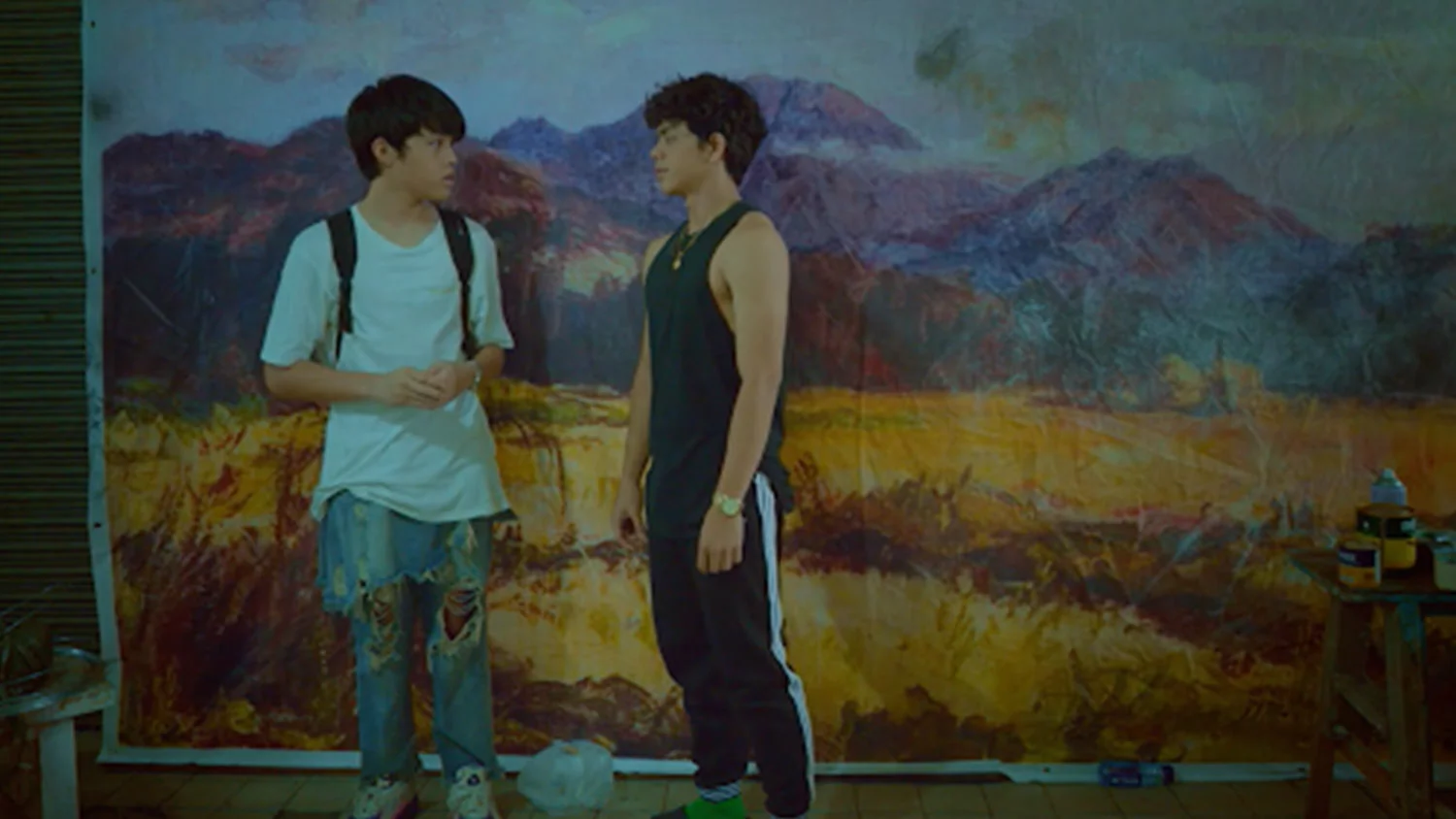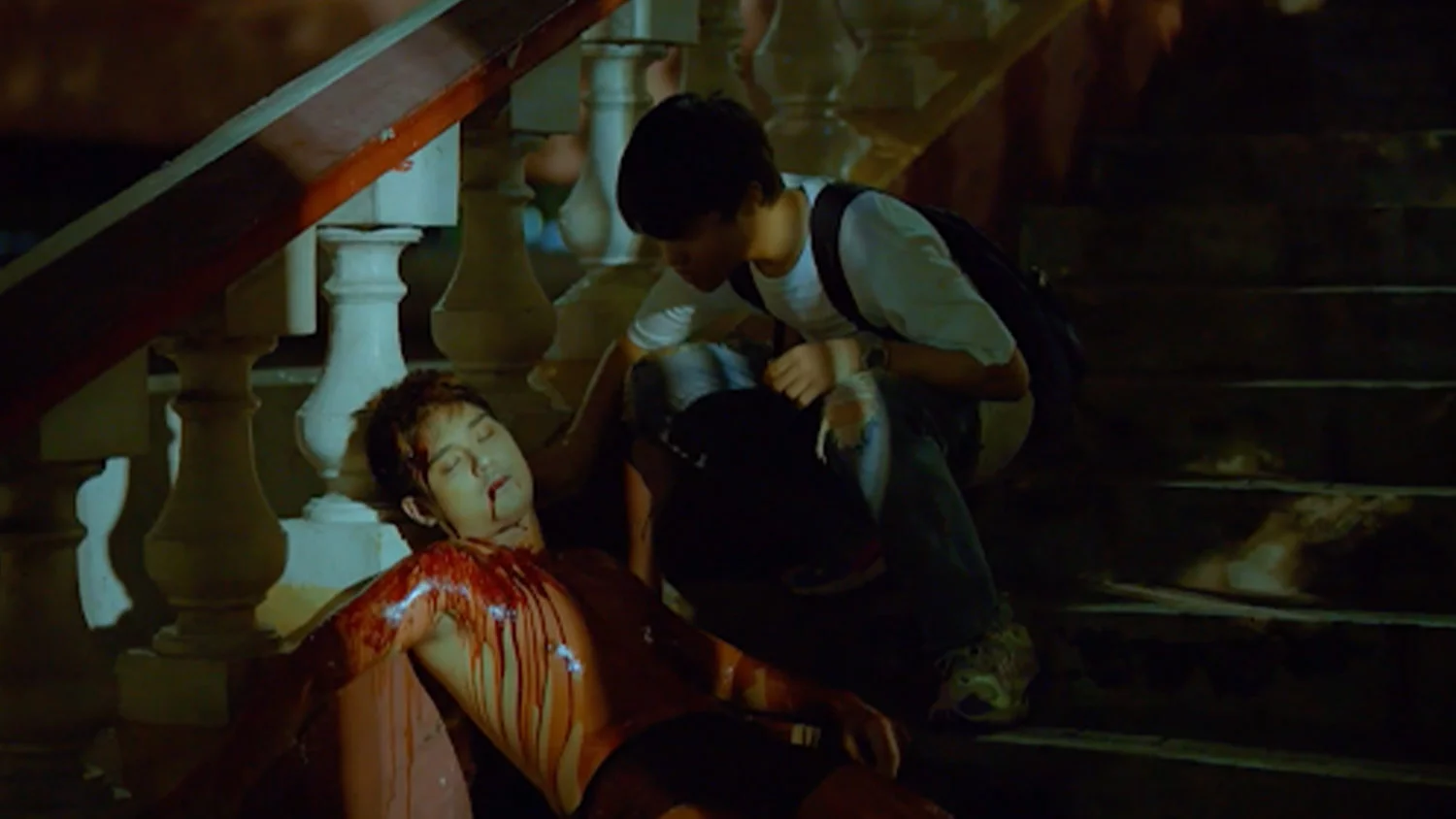A Modern Love, A Modern Death
By Kathleen Bu

The camera tracks the streets of Manila at night, a dark neon lit street, people stumbling along the pavements, synth tracks pulsating with police sirens. The night is young, full of the promise of a youth’s experimental night. Then, anxiety sets in. A young boy sitting in a cab, texting an anonymous hook-up.
How To Die Young in Manila sets an anxiety inducing tone as we witness a naïve young boy encounter his first hook-up date. The modern love: one hidden behind a black mirror, only to hope your vision of the person in reality proves to be true. Getting out of the cab, he spots a group of male prostitutes, stereotypically young, cool, masculine. Thinking one of them is his date, he follows them, almost stalker-like, down dark alley ways and into the train station.
Throughout the journey, surreal dead bodies are strewn along the streets, all covered in different forms of liquid: water, faeces and the last body he sees: covered in thick red blood, one can only interpret as the foreshadowing of death. The character stares at it, with almost some sort of connection, before following the men once again.

When they meet, it is set against the backdrop of a painting: mountains and an orange field of wheat. Almost like a Hollywood production, the lovers meet. Yet it is anticlimactic and almost awkward. The conversation is abruptly, yet purposefully, cut off in an ending mirroring the art of Saint Sebastian Arrows of Desire.

Saint Sebastian was a Christian saint and Martyr who was killed in 288 in Rome on orders from the Roman Emperor. Being the subject of a plateau of paintings, he is known to be an icon of homoeroticism, sensuality and ‘protector of the plague’. Using this image, the film clearly ties in with sentiments from the queer community, mirroring the fear and injustice they face. The title itself suggests prejudice against the LGBTQA+ community, where the fear of death and danger lurks in every corner of the streets.
Hate crimes against the Philippine LGBTQA+ community has long been a pressing issue. With the murder of Jennifer Laude, a transgender woman, and more recently, in 2019, of Jessa “Shantal” Remiendo. The death of the women have sent fear amongst the local transgender community. Without the protection from the government and support from the people, the film is an outcry of injustice.
The film fades to white in an ambiguous ending. Could this represent the death of the character? Or a suggestion of fantasy did this all happen in his head? In this short, it seems to be ambiguous yet intentionally so. Director Petersen Vargas presents a pressing societal issue of human rights. The ending of the film is not a solution but a call to the people and the government. It questions and challenges the cruel policies of our society and government against the LGBT community, which kill young men and women everywhere. Hiding under the darkness of night, the streets loom with desire and death.

